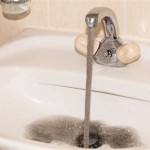What Are Bathtubs Made Of?
Bathtubs are an essential part of any bathroom, providing a place to relax and unwind. They come in a variety of shapes, sizes, and materials, but what are bathtubs made of? Here is a look at the most common materials used to make bathtubs:
Acrylic: Acrylic is a lightweight, durable material that is easy to clean and maintain. It is also non-porous, which means that it will not harbor bacteria or mold. Acrylic bathtubs are available in a variety of colors and finishes, and they can be molded into a variety of shapes.
Cast Iron: Cast iron bathtubs are made from a mixture of iron and carbon. They are heavy and durable, and they retain heat well. Cast iron bathtubs are available in a variety of colors and finishes, and they can be coated with enamel for easy cleaning.
Fiberglass: Fiberglass bathtubs are made from a combination of fiberglass and resin. They are lightweight and easy to install, and they are available in a variety of colors and finishes. Fiberglass bathtubs are not as durable as acrylic or cast iron bathtubs, but they are more affordable.
Porcelain: Porcelain bathtubs are made from a mixture of clay and minerals. They are fired at a high temperature, which makes them durable and non-porous. Porcelain bathtubs are available in a variety of colors and finishes, and they can be coated with enamel for easy cleaning.
Stone: Stone bathtubs are made from natural stone, such as marble, granite, or limestone. They are heavy and durable, and they retain heat well. Stone bathtubs are available in a variety of colors and finishes, and they can be carved into a variety of shapes.
When choosing a bathtub, it is important to consider the material, size, shape, and color. You should also consider your budget and your personal preferences. By understanding the different materials used to make bathtubs, you can make an informed decision about the best bathtub for your needs.

What Bathtub Material Is In My Bathroom Maryland Tub Tile

What Are Bathtubs Made Out Of The Family Handyman
How To Choose The Best Bathtub Material A Comparison Guide Vevano

Common Bathtub Materials Pros And Cons 2024 Badeloft

What Exactly Are Bathtubs Made Of Luna Spas

4 Common Bathtub Materials Pros Cons What To Buy For Your Bathroom

What Exactly Are Bathtubs Made Of Luna Spas

Common Bathtub Materials Pros And Cons 2024 Badeloft

What Are Bathtubs Made Of Bathtub Materials Pros Cons Bath Fitter

What Exactly Are Bathtubs Made Of Luna Spas








